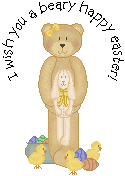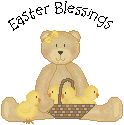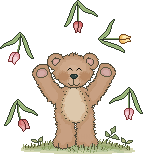Hoppy Easter


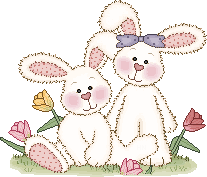

"Here comes Peter Cottontail, hoppin' down the bunny trail, hippity hoppin', Easter's on its way...". I believe Gene Autry sang about Peter Cottontail. Easter has always been a day of making Easter baskets with goodies for my kids and going on egg hunts when they were younger. The Easter bunny was never part of our traditions because of traumatizing me as a child. No thank you. Even though my kids are grown, I still put together an Easter bucket for them and we celebrate the day making dinner and dyeing eggs.
Easter is also one of the most important celebrations in the Christian calendar. The significance of Easter is Jesus Christ's triumph over death. His resurrection means eternal life that is granted to all who believe in Him.
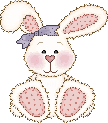
The Bible makes no mention of a long-eared, short-tailed creature who delivers decorated eggs to well-behaved children on Easter Sunday, or the ones you can visit. Nevertheless, the Easter bunny has become a prominent symbol of Christianity’s most important holiday. The exact origins of this mythical mammal are unclear, but rabbits are known to be prolific procreators and are an ancient symbol of fertility and new life.
Easter eggs are likely linked to pagan traditions. The egg, an ancient symbol of new life, has been associated with pagan festivals celebrating spring. From a Christian perspective, Easter eggs are said to represent Jesus’ emergence from the tomb and resurrection. Decorating eggs for Easter is a tradition that dates back to at least the 13th century, according to some sources. Another explanation is that eggs were formerly a forbidden food during the Lenten season, so people would paint and decorate them to mark the end of the period of penance and fasting, then eat them on Easter as a celebration.
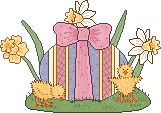
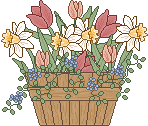
Tulips and lilies are often abundant during the Easter holiday. The lily symbolizes the purity of Christ to Christians. Their growth from dormant bulbs to flowers symbolize the rebirth and hope of Christ’s resurrection. Lilies are native to Japan and were brought to England in 1777, but found their way to the U.S. in the wake of WW I. They went on to become the unofficial flower of Easter celebrations across the United States.
The symbol of the lamb is strongly rooted in Christian belief. One of the most important symbols of Easter, the lamb signifies the sacrifice of Jesus Christ. Lamb is a traditional Easter food. Christians refer to Jesus as the “Lamb of God.” This comes from the Jewish Passover, the event where every family sacrificed a lamb in good faith of their Lord. In the tale that followed, Jesus Christ laid down his life for all of humanity and hence, became the Passover Lamb.


It is widely believed that the cross on which Jesus Christ was crucified was made of the wood from a Dogwood Tree. The legend goes that in the days of Christ, the dogwood tree was a much larger, strong- trunked tree, much different than the smaller understory tree we are familiar with. The story continues that when Christ was crucified, his cross was made of the sturdy bark of the dogwood tree, and (as the legend goes) God both cursed and blessed the dogwood tree the day His Son died. He cursed it by making it much smaller than it was, and blessed it by having it bloom every year during the Easter season as an additional reminder to the world of Jesus’ love.
The Legend of the Dogwood
When Christ was on earth, the dogwood grew
To a towering size with a lovely hue.
Its branches were strong and interwoven
And for Christ's cross its timbers were chosen
Being distressed at the use of the wood
Christ made a promise which still holds good:
"Not ever again shall the dogwood grow
To be large enough for a tree", and so
Slender and twisted it shall always be
With cross-shaped blossoms for all to see.
The petals shall have bloodstains marked brown
And in the blossom's center a thorny crown.
"All who see it will think of Me,
Nailed to a cross from a dogwood tree.
Protected and cherished this tree shall be
A reflection to all of My agony."
~Author Unknown~
